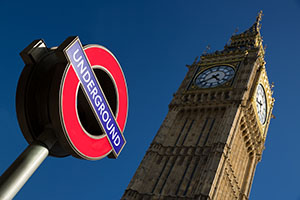 One aspect readers may have noticed, regarding the stand off and potential shut down of the USA government, is the lack of estimates on the rise required to the debt ceiling. Some analysts suggest it will be as low as a trillion dollars, a huge sum when observed in isolation, but in context of the debt ceiling, the USA govt’s appetite to spend and recent raises it would be relatively small. A raise of one trillion could last less than a year. However, on reflection re-visiting the issue, on an annual basis, could be considered expedient, given that both rivals in the USA house of Congress could then anticipate the annual review and adapt their calendars accordingly.
One aspect readers may have noticed, regarding the stand off and potential shut down of the USA government, is the lack of estimates on the rise required to the debt ceiling. Some analysts suggest it will be as low as a trillion dollars, a huge sum when observed in isolation, but in context of the debt ceiling, the USA govt’s appetite to spend and recent raises it would be relatively small. A raise of one trillion could last less than a year. However, on reflection re-visiting the issue, on an annual basis, could be considered expedient, given that both rivals in the USA house of Congress could then anticipate the annual review and adapt their calendars accordingly.
Certain respected organisations have published their thoughts regarding the potential damage a shut down of government in the USA would cause. Moody’s Analytics has run their numbers over the potential impasse and come to the conclusion that up to 1.4% could be cut off USA growth if that shutdown were to last up to four weeks. The estimate for USA growth, should the USA govt not shut down, is put at 4% year on year. A two-week shutdown starting on Oct. 1st could cut growth by 0.3 percentage point to an annual 2.3 percent rate, according to St. Louis-based Macroeconomic Advisers LLC.
How common are government shutdowns?
A shutdown of govt in the USA is not unusual or unprecedented. There have been seventeen funding gaps between 1977 and 1996. A shutdown of just a few days would have very little impact on the economy analysts say. In 1995 and 1996, interruptions only lasted a matter of days; from Nov. 14 to Nov. 19 and from Dec. 16 to Jan 6, as Republicans clashed with President Bill Clinton’s administration. But a three or four week gap would do significant economic damage..
Those back-to-back shutdowns cut GDP by 0.25 percentage point in the fourth quarter of 1995, almost entirely because federal employees were not paid, according to an analysis by Joel Prakken, senior managing director at Macroeconomic Advisers.
Market snapshot at 10:00 am UK time
The Nikkei closed down 0.26% in the overnight/early morning session. The Hang Seng was up 0.36% and the CSI up 0.44%. The ASX 200 closed up 0.24%. European indices are in the red in the early part of the London session; STOXX index down 0.17%, FTSE down 0.30%, CAC down 0.17% as is the DAX. The Athens exchange is up 0.93% on expectations that Greece will not require a further bailout once the troika have concluded their visit to judge the impact of their austerity measures.
Commodities
ICE WTI oil is down 0.49% at $102.53 per barrel, whilst NYMEX natural is up 0.08% at $3.57 per therm. COMEX gold is up marginally by 0.08% at $1325.20 per ounce with silver on COMEX down 0.74% at $21.54 per ounce.
Equity index futures
Looking towards the New York open the DJIA equity index future is currently down 0.12%, the SPX down 0.24%, and the NASDAQ equity index future down 0.09%.
Forex focus
The yen rose 0.4 percent to 98.61 per dollar early in the London session. It climbed 0.4 percent to 133.04 per euro. The dollar was at $1.3491 versus the 17 nation shared currency European peer from $1.3489 yesterday. The U.S. Dollar Index, which tracks the greenback versus 10 major currencies, slid 0.1 percent to 1,013.99, cutting its weekly advance to 0.1 percent. The yen strengthened versus all of its 16 major peers as investors sought safety in safe currency havens due to concerns that a budget impasse amongst U.S. lawmakers will send the nation to the brink of a federal government shutdown.
Sterling rose by 0.3 percent to $1.6095 early in the London trading session after climbing to $1.6163 on Sept 18th, which was the highest level seen since Jan 11th. Sterling has gained 0.3 percent to 83.84 pence per euro after appreciating to 83.53 pence on Sept 18th, the strongest level seen since Jan 17th. The pound advanced, approaching the highest level versus the dollar in over eight months, after Bank of England Governor Mark Carney told a Northern U.K. newspaper that he sees no reason for further monetary stimulus.
Bonds
The benchmark 10-year yield rose one basis point, or 0.01 percentage point, to 2.66 percent early in the London session. The 2.5 percent note due August 2023 fell 2/32, or 63 cents per $1,000 face amount, to 98 5/8. The yield has fallen eight basis points this week. The yield climbed to 3.01 percent earlier this month on expectations the Fed would trim its bond-buying programme and then subsequently fell after policy makers unexpectedly maintained the purchases. The rate increased two basis points on Thursday.





